Brain technology patents soar as companies get inside people's heads
A man demonstrates how he uses a keyboard without typing by wearing a skull-cap with sensors, at a conference on brain technology in Tel Aviv October 15, 2013.
From ways to eavesdrop on brains and learn what advertisements excite consumers, to devices that alleviate depression, the number of U.S. patents awarded for "neurotechnology" has soared since 2010, according to an analysis released on Wednesday.
Most surprising, concluded market-research firm SharpBrains, is that patents have been awarded to inventors well beyond those at medical companies. The leader in neurotechnology patents, according to the report, is consumer-research behemoth Nielsen.
That expansion into non-medical uses, said SharpBrains Chief Executive Alvaro Fernandez, who presented the results at the NeuroGaming conference in San Francisco, shows we are at the dawn of "the pervasive neurotechnology age," in which everyday technologies will be connected to brains.
"Neurotech has gone well beyond medicine, with non-medical corporations, often under the radar, developing neurotechnologies to enhance work and life," he said.
Patents for neurotechnology bumped along at 300 to 400 a year in the 2000s, then soared to 800 in 2010 and 1,600 last year, SharpBrains reported.
Those awarded to medical device company Medtronic PLC, for instance, include ways to use electroencephalography (EEG) to measure the severity of a brain lesion. Several held by medical technology company St. Jude Medical Inc. describe ways to change brain activity to, say, improve vision.
But it is the explosion in non-medical uses, such as controlling video games with brain waves, that is driving neurotechnology.
SharpBrains measured "intellectual property (IP) strength" by number of neurotechnology patents as well as patent quality, reflected in how many other patents reference them, for instance.
By that measure, Nielsen leads the pack, with patents describing ways to detect brain activity with EEG and translate it into what someone truly thinks about, say, a new product, advertising, or packaging.
Microsoft Corp. holds patents that assess mental states, with the goal of determining the most effective way to present information. If software knows a user's attention is wandering, it could hold back complicated material.
Another Microsoft patent describes a neuro-system that claims to discern whether a computer user is amenable to receiving advertisements.
Such patents reflect the enthusiasm for neuro-monitoring, something many scientists say has not been shown to be more effective than, say, asking people what they think about a product.
On a lighter note, an EEG patent awarded to San Jose-based biosensors company NeuroSky describes a design for a headset that could deliver music based on a user's brainwaves, perhaps a ballad when the listener is feeling contemplative.
SpaceX puts Dragon passenger spaceship through test run
A Space Exploration Technologies' passenger spaceship made a quick debut test flight on Wednesday, shooting itself off a Florida launch pad to demonstrate a key emergency escape system.
The 20 foot- (6 meter) tall Dragon capsule, a modified version of the spacecraft that flies cargo to the International Space Station, fired up its eight, side-mounted thruster engines at 9 a.m. EDT to catapult nearly one mile (1.6 km) up and over the Atlantic Ocean.
The flight ended less than two minutes later with the capsule's parachute splash-down about 1.4 miles (2.6 km) east of the Cape Canaveral Air Force Station launch site.
“I think this bodes quite well for the future of the program,” SpaceX founder and chief executive Elon Musk told reporters on a conference call after the flight. “It was quite a complicated test.”
The purpose of the flight was to demonstrate an escape system to carry the capsule to safety in case of a fire or accident during launch.
"It’s kind of like an ejection seat in an airplane. You have the ability to leave the pad sitting in the capsule and the capsule would come off and land," NASA astronaut Eric Boe said during an interview on NASA TV.
"It's one of the things the shuttle didn't have," added Boe, who twice flew as a space shuttle pilot.
NASA retired the shuttles in 2011 and invested in commercial designs for a new generation of space taxis. The U.S. space agency has contracts worth a combined $6.8 billion with privately owned SpaceX, as the California-based firm is known, and Boeing for spaceship development and up to six flights per company.
NASA hopes to be flying astronauts to the space station on U.S. spaceships by December 2017, breaking Russia’s monopoly on crew ferry flights. NASA currently pays Russia about $63 million per person for rides on its Soyuz capsules.
No astronauts were aboard the heavily instrumented Dragon capsule that flew Wednesday, though a crash dummy was strapped into a seat in the crew cabin. Musk said the capsule reached a peak speed of 345 mph (555 kph).
“That’s pretty zippy,” he said.
SpaceX plans to refly the capsule as early as this summer aboard a Falcon 9 rocket to test an abort maneuver at supersonic speed and high altitude. The rocket will fly from SpaceX's launch pad at Vandenberg Air Force Base in California.
The 20 foot-tall Dragon capsule, a modified version of the spacecraft that flies cargo to the International Space Station, fired up its eight, side-mounted thruster engines to catapult itself nearly one mile up and over the Atlantic Ocean.
Deep-sea microbes called missing link for complex cellular life
A hydrothermal vent field along the Arctic Mid-Ocean Ridge, close to where 'Loki' was found in marine sediments, is seen in this undated handout image courtesy of the the Centre for Geobiology at University of Bergen, Norway.
Deep beneath the Atlantic Ocean between Greenland and Norway, scientists have found microorganisms they call a missing link connecting the simple cells that first populated Earth to the complex cellular life that emerged roughly 2 billion years ago.
The researchers said on Wednesday a group of microorganisms called Lokiarchaeota, or Loki for short, were retrieved from the inhospitable, frigid seabed about 1.5 miles (2.35 km) under the ocean surface not too far from a hydrothermal vent system called Loki's Castle, named after a Norse mythological figure.
The discovery provides insight into how the larger, complex cell types that are the building blocks for fungi, plants and animals including people, a group called eukaryotes, evolved from small, simple microbes, they said.
The Lokiarchaeota are part of a group called Archaea that have relatively simple cells lacking internal structures such as a nucleus. But the researchers found the Lokiarchaeota share with eukaryotes a significant number of genes, many with functions related to the cell membrane.
These genes would have provided Lokiarchaeota "with a 'starter-kit' to support the development of cellular complexity," said evolutionary microbiologist Lionel Guy of Sweden's Uppsala University.
Archaea and bacteria, another microbial form, are together known as prokaryotes.
"Humans have always been interested in trying to find an answer to the question, 'Where do we come from?' Well, now we know from what type of microbial ancestor we descend," said Uppsala University evolutionary microbiologist Thijs Ettema, who coordinated the study.
"Essentially, Lokiarchaeota represent a missing piece of the puzzle of the evolution from simple cells - bacteria and archaea, prokaryotes - to complex cells - eukaryotes, which includes us humans," Ettema added.
Earth's wide diversity of life would have been impossible without this transition from rudimentary cells into the more complicated ones seen in multicellular life. Microbial life originated about 3.5 billion years ago. The first complex cellular life came roughly 2 billion years ago.
How cellular complexity first developed has been one of the big puzzles of evolutionary biology, Guy said.
The Lokiarchaeota were retrieved from oxygen-starved sediment layers during voyages of a Norwegian research vessel, said microbiologist Steffen Jørgensen of Norway's University of Bergen.
While the Loki's Castle geothermal vents spew fluids reaching about 570 degrees Fahrenheit (300 degrees Celsius) about 9 miles (15 km) away, the Lokiarchaeota's locale was desolate, pitch dark and around the freezing point, Jørgensen added.
The research appears in the journal Nature.
Failed Russian spacecraft falls from orbit, burns up
An unmanned Russian spaceship loitering in orbit after a failed cargo run to the International Space Station plunged into Earth's atmosphere on Thursday, the Russian space agency reported.
The capsule, loaded with more than three tons of food, fuel and supplies for the station crew, fell from orbit at 10:04 p.m. EDT (0204 GMT), the Russian space agency Roscosmos said in a statement.
At the time, the Progress-59 spacecraft was flying over the central Pacific Ocean, the statement said.
Most of the spacecraft was expected to burn up during its high-speed descent through the atmosphere, but small pieces of the structure could have survived and splashed down in the ocean.
"Only a few small pieces of structural elements could reach the planet's surface," Roscosmos said in a statement earlier Thursday - similar to what happens at the end of routine Progress cargo missions.
The freighter was launched on April 28 from the Baikonur Cosmodrome in Kazakhstan, but never made to the station, a $100 billion research laboratory that flies about 250 miles (418 km) above the earth.
Ground controllers lost contact with the Progress spaceship shortly after it separated from the upper-stage of its Soyuz rocket about nine minutes after launch.
An investigation into the failed mission is under way, Roscosmos said. Russia has flow 62 Progress spacecraft to the station to deliver modules and cargo, two of which have not been successful.
Various versions of the Progress freighters have been flying since 1978, supporting previous Soviet-era stations including Salyut 6, Salyut 7 and Mir. The capsules are designed to burn up in the atmosphere after delivering their cargo.
The United States hired privately owned Space Exploration Technologies, or SpaceX, and Orbital ATK to fly cargo to the station after the space shuttles were retired in 2011.SpaceX's missions have all been successful.
Orbital lost a cargo ship in October after a failed launch. Europe flew five ATV freighters to the station, all successfully, but has no plans to fly any more. Japan is preparing for its fifth HTV cargo flight in August.
Huffing and puffing won't blow these straw homes down
A batch of straw houses have gone on sale in the UK - and their manufacturers insist that unlike the home featured in classic nursery rhyme The Three Little Pigs, huffing and puffing will not lead the buildings to blow down.
In fact, the architect of the scheme, Professor Pete Walker of the University of Bath, says that using straw in home construction isn't just viable, but safer than other traditional building materials, and will lead to vastly reduced energy bills for inhabitants.
Seven of the homes have been built in the west country town of Shirehampton, and cost a similar amount to a traditional red-brick house to construct. According to Walker, "you can see that the building is clad in red brick but underneath that are the straw bales which form this super-insulated wall construction, whereas the houses around here are largely brick cavity construction. So the innovation really has laid in developing the suitability of straw as a construction material and also convincing people that straw is a viable construction material. People often refer to the nursery rhyme of the Three Little Pigs, and as a result I think people need convincing that straw is robust, safe, durable, and a modern construction material."
Walker says that straw is used in two different ways in the construction. "In this particular building straw has been used in two ways. First of all it's used as straw bales, so the bales come directly from the farmer from wheat straw, and that is in the outside of the walls, so it's there as installation behind the brick walls, and then inside compressed straw panels are being used as lining panels and as dividers to separate the rooms as well," he said.
The 3.2 meter by 2.9 meter ModCell straw panels consist of an engineered timber frame which enclose the compressed straw bale insulation. The load-bearing straw panels are constructed within an airtight design, in conjunction with triple glazed windows. According to Walker, the straw walls provide three times' greater insulation than required by current UK building regulations, so fuel bills should fall by up to 90 per cent.
The homes were built by Bristol-based company ModCell, in conjunction with Walker's team at the University of Bath's Department of Architecture & Civil Engineering. The university department has been developing the technology for around 15 years, initially building a prefabricated straw bale building on campus called the BaleHaus as a test site in 2009.
Walker says using straw has other positive environmental benefits, utilizing some of Britain's seven million tonnes of straw remains left after the production of wheat flour, around half of which is discarded due to its low value. This leftover straw could be used to build more than 500,000 new homes, as an average three-bedroom house needs 7.2 tonnes of straw. Straw also absorbs carbon dioxide (CO2), rather than releasing it, as happens with brick and cement.
"We're not displacing food crops to grow, (as) in the case where the materials have been used to grow biofuels," said Walker. "We already grow wheat because we need it for bread and for other uses, so we're just using a material that's already available on the market. And as a plant, through photosynthesis, it actually absorbs carbon dioxide from the atmosphere and that carbon dioxide is effectively stored within the straw. So it comes in the form of a carbon sink, so it's carbon storage within the fabric of the building and so the more straw you use the more carbon you store within your building for the life of the building."
ModCell straw panels have also, perhaps counter-intuitively, proved particularly resistant to fire. "They passed the fire resistance requirements more than satisfactorily," said Walker. "The panels here which are not lined with lime render had a fire resistance of about 52 minutes and they need fire resistance of 30 minutes for use in housing. But one panel that we used, which was rendered with lime, onto the straw actually had a fire resistance of two hours and fifteen minutes before we stopped the test. So in fact it's remarkably resistant to fire."
The seven homes were put up for sale by Bristol social housing firm Connolly and Callaghan, at £220,000 (330,000 USD) for two bedroom houses and £235,000 (250,000 USD) for four bedroom ones. The four-bedroom have been oversubscribed. Connolly and Callaghan hope to build a further 49 more straw homes nearby.
Messenger's Mercury trip ends with a bang, and silence
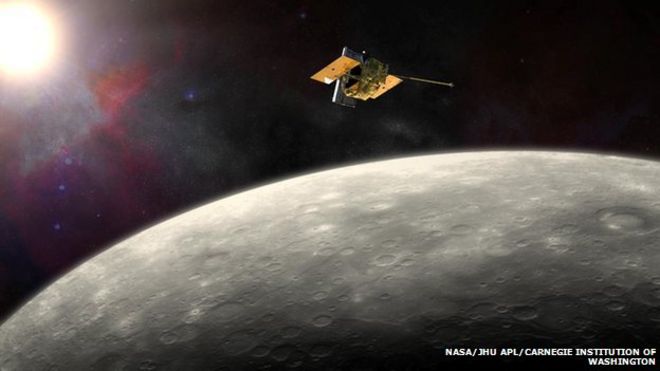 The probe, illustrated soaring above Mercury, went into orbit around the planet in March 2011
The probe, illustrated soaring above Mercury, went into orbit around the planet in March 2011Nasa's Messenger mission to Mercury has reached its explosive conclusion, after 10 years in space and four in orbit.
Now fully out of fuel, the spacecraft smashed into a region near Mercury's north pole, out of sight from Earth, at about 20:00 GMT on Thursday.
Mission scientists confirmed the impact minutes later, when the craft's next possible communication pass was silent.
Messenger reached Mercury in 2011 and far exceeded its primary mission plan of one year in orbit.
That mission ended with an inevitable collision: Messenger slammed into our Solar System's smallest planet at 8,750mph (14,000km/h) - covering 2.4 miles (3.9km) every second.
The impact will have completely obliterated this history-making craft. And it only happened because Mercury has no thick atmosphere to burn up incoming objects - the same reason its surface is so pock-marked by impact craters.
According to calculations, the 513kg, three-metre craft blasted a brand new crater the size of a tennis court. But that lasting monument is far too small to be visible from Earth.
 Mission scientists released this illustration showing Messenger's calculated impact location
Mission scientists released this illustration showing Messenger's calculated impact location"Today we bid a fond farewell to one of the most resilient and accomplished spacecraft ever to have explored our neighbouring planets," said Sean Solomon, Messenger's principal investigator.
"Our craft set a record for planetary flybys, spent more than four years in orbit about the planet closest to the Sun, and survived both punishing heat and extreme doses of radiation."
Messenger's fuel supply, half its weight at launch, was completely spent weeks ago but four final manoeuvres were conducted, to extend the flight as long as possible. These were accomplished by venting the helium gas normally used to pressurise actual rocket fuel into the thrusters.
The last of those manoeuvres took place on 28 April.
 These are two of Messenger's final images, snapped on 26 and 29 April
These are two of Messenger's final images, snapped on 26 and 29 AprilDuring its twice-extended mission, Messenger (MErcury Surface, Space ENvironment, GEochemistry, and Ranging) transformed our understanding of Mercury. It sent back more than 270,000 images and 10 terabytes of scientific measurements.
It found evidence for water ice hiding in the planet's shadowy polar craters, and discovered that Mercury's magnetic field is bizarrely off-centre, shifted along the planet's axis by 10% of its diameter.
Skimming the surface
For four years - and 4,105 circuits in total - Messenger traced a highly elliptical orbit around Mercury. It regularly drifted out to a distance of nearly twice the planet's diameter, before swinging to within 60 miles (96km) at closest approach.
To maintain this pattern in the face of interference from the Sun, it needed a blast of engine power every few months, which meant the mission faced an inevitable, violent end when the fuel ran out.
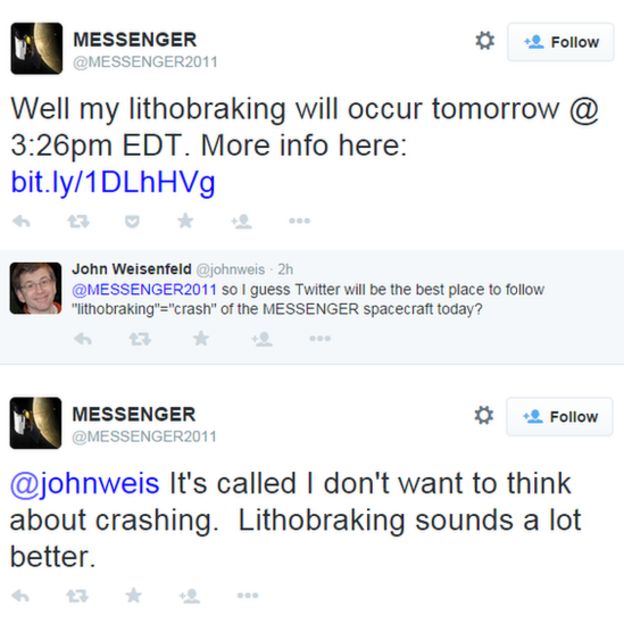 The Messenger Twitter account was active in the run-up to the crash
The Messenger Twitter account was active in the run-up to the crashMessenger made its penultimate pass at a distance of between 300 and 600 metres - one or two times the height of the Eiffel Tower - at about 13:00 BST on Thursday.
"If you could see that, it would be a real spectacle," said Jim Raines, the instrument scientist on the craft's FIPS instrument (Fast Imaging Plasma Spectrometer) and a physicist at the University of Michigan. "It would cross the horizon in just a second or two, flying low overhead at ten times the speed of a supersonic fighter."
The next time it swung back close to Mercury's surface, eight hours later, it was curtains for Messenger; the impact was precisely modelled using maps produced by the craft's own data.
Mercury has towering cliffs left by its shrinking, wrinkling history, but the calculated path showed Messenger missing these particular obstacles.
Media captionMessenger compiled this coloured map of Mercury during its first year in orbit
"It's a pretty flat area of the planet," said Nancy Chabot, the instrument scientist on the Mercury Dual Imaging System (MDIS), Messenger's twin cameras. "It's going to be a skimming impact."
But it will have left a mark.
"It will probably be an oblique crater... because the impact angle will be so shallow, so grazing to the surface. But at over 8,000 miles per hour, it's going to make a crater."
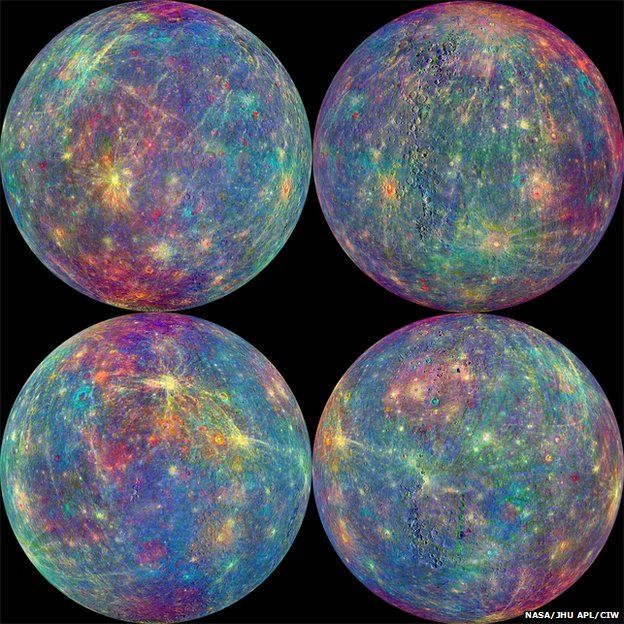 These new images overlay chemistry measurements (in colour) and grayscale photos
These new images overlay chemistry measurements (in colour) and grayscale photosBecause the impact happened on the side of the planet facing away from Earth, the craft was out of contact in its final moments. So it probably carried more than 1,000 unseen images to its final, explosive resting place.
MDIS used to take hundreds of photos every day. Earlier this month, mission scientists released fresh images which superimposed years of spectrometry data about the chemistry of the planet's surface, illustrated by different colours, onto black-and-white images built up from thousands of smaller MDIS photos.
Proud achievements
The planet has been mapped and studied to a level of detail far beyond the original mission plan. Many of the results themselves were also surprising.
"A lot of people didn't give this spacecraft much of a chance of even getting to Mercury, let alone going into orbit and then gathering data for four years instead of the original scheduled one-year mission," said William McClintock from the University of Colorado Boulder, principal investigator on MASCS (the Mercury Atmospheric and Surface Composition Spectrometer, another of the seven scientific instruments on board).
"In the end, most of what we considered to be gospel about Mercury turned out to be a little different than we thought."
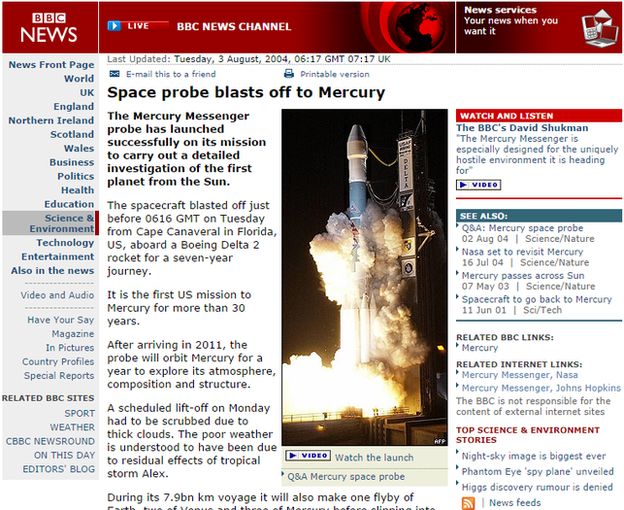 This is how the BBC News website covered Messenger's launch in 2004
This is how the BBC News website covered Messenger's launch in 2004Dr Chabot remembers the tension of processing the first image ever recorded by a spacecraft orbiting Mercury, back in 2011. She had only recently taken over as the instrument scientist on MDIS.
"It was exciting but for me personally it was also a bit stressful," Dr Chabot, who works at the Johns Hopkins Applied Physics Laboratory, told the BBC. "But then the first image came back and it looked amazing and beautiful, and we realised we were here at Mercury to stay. I take a lot of pride in that image."
Despite being able to look back with pride, Dr Raines said this was still a sad day for Messenger scientists.
"Pretty much all the instruments are still doing great, so that makes it a little harder," he told BBC News. But the mission was always going to be limited by the fuel needed to maintain its difficult orbit.
"To be honest, I've seen this day coming for a long time and it's just one of these things that I've not been looking forward to. I'm really going to be sad to see it go."
Climate change risk to 'one in six species'
 Amphibians face a number of threats to their survival
Amphibians face a number of threats to their survivalOne in six species on the planet could face extinction if nothing is done to tackle climate change, analysis suggests.
If carbon emissions continue on their current path - and temperatures rise by 4 degrees - 16% of animals and plants will be lost, according to a review of evidence.
The study, published in Science, shows risks are highest in South America, Australia and New Zealand.
Previous estimates range from 0 to 54%.
Dr Mark Urban of the University of Connecticut, US, analysed data from 131 scientific studies on the risk of extinction from climate change.
Many species will be able to shift their ranges and keep up with climate change whereas others will notDr Mark Urban, University of Connecticut
He found that the rate of biodiversity loss is likely to speed up with each degree Celsius rise in temperature.
If future temperatures rise by 2 degrees compared with pre-industrial times, global extinction risk will rise from 2.8% today to 5.2%.
But under the scenario where global warming continues on its current path, 16% of species (one in six) face extinction.
"If the world does not come together and control greenhouse gas emissions and we allow the Earth to warm considerably we will face a potential loss of one in six species," said Dr Urban.
"Many species will be able to shift their ranges and keep up with climate change whereas others will not either because their habitat has disappeared or because they can't reach their habitat anymore."
Unique habitats
Higher extinction risks are predicted for Australia, New Zealand and South America, where there are many species adapted to live in habitats not found elsewhere.
Commenting on the research, Prof John J Wiens of the University of Arizona, said the global extinction risk from climate change might be even higher than 16%, as the majority of studies analysed were from Europe and North America, where extinction risks are lower.
"In South America, the extinction risk was estimated to be 23%," he said.
"Unfortunately, this higher number might better reflect the number of species that might go extinct due to climate change globally, if we consider how the world's species are distributed."
Dr Mike Barrett, Director of Science and Policy at WWF-UK, said the findings echoed its Living Planet Report, which found that populations of vertebrate species have halved since 1970.
"This report looks forward and finds that many species are threatened with extinction if we fail to tackle climate change."
Song heralds arrival of new bird species

The surrounding dense habitat makes the bird difficult to spot but its song reveals its presence
The distinctive song of a secretive and elusive bird in central China has helped researchers to identify it and deem it to be a new species to science.
Scientists first heard the harsh call of the Sichuan bush warbler in 1987, but they only recently gathered enough data to formally describe it.
The new species, Locustella chengi, has been named after Prof Cheng Tso-hsin, a distinguished Chinese ornithologist.
The details have been published in the Avian Research journal.
"These birds are almost impossible to see when they are not singing," explained one of the scientists to describe the new species, Per Alstrom from the Swedish Species Information Centre, based at the Swedish University of Agricultural Sciences.
"If the species had not been singing when we first heard it back in 1987, we would never have seen it.
"They are incredibly difficult to see because they are so secretive, sneaking around in the dense vegetation, close to or on the ground. But when they are singing, you can hear them from quite a long distance.
He told BBC News: "By being patient or using tapes to attract them, you can see them - although they will stay in the dense habitat."
Harsh tones
The song of the new species is harsher than that of its closest relative, the russet bush warbler, and consists of a "drawn-out note followed by a shorter note that are repeated in series".
The team of researchers, from Sweden, China, Vietnam, the UK and US, carried out DNA analysis that showed the two birds were very closely related and were probably separated from a common ancestor about 850,000 years ago.
Prof Alstrom explained that the publication of the paper formally describing the Sichuan bush warbler came after a search lasting almost 30 years.
"I have been trying to find this bird ever since we first heard it back in 1987," he said. We suspected that it was something different, something new (to science).
"Last year, we had received information from colleagues that both these birds - the unknown species and the Russet Bush warbler - were present on the same mountain.
"We had not found both of them together previously, so we went there specifically to get more information on how they interacted together; whether they occurred in different habitats, etc, to see if they were actually ecologically and reproductively isolated in these areas."
Although the two species have slight differences in proportions, it is the the birds' songs that mark a clear distinction.
Prof Alstrom suggested that was probably the result of random processes that had resulted in the two species evolving different vocalisation patterns.
"It is probably a combination of chance factors, such as individuals undergoing vocal "mutation', and also sexual selection," he suggested.
"Songs are used to attract females and to deter other males from their territory, so there is probably a factor of strong sexual selection evolution involved in these differences."
Nepal quake: Why are some tremors so deadly?
 Great efforts had been made in Nepal to improve resilience. Even so...
Great efforts had been made in Nepal to improve resilience. Even so...
On 1 April, 2014, a Magnitude 8.2 earthquake rocked northern Chile. Six people died, 2,500 homes were damaged and 80,000 people were displaced. Just over one year later, a M7.8 earthquake strikes Nepal. Over 6,200 people (and counting) have been killed, entire towns and villages flattened and millions of people left homeless.
Chile's earthquake barely made the news, whilst Nepal's has brought complete and utter devastation. How did two such similar earthquakes have such disparate effects?
A huge part of the answer is, of course, building standards and wealth.
Since Chile's terrible M9.5 earthquake in 1960, where over 5,500 people died, the country has taken big steps in modernising its buildings, designing them to withstand the shaking produced by great earthquakes.
Meanwhile, in Nepal, few buildings were up to code, and many toppled when the earthquake struck.
But wealth and building codes don't tell the entire story: the geology is different, too.
Nepal sits on a continental collision zone (India is smashing into Asia) and its earthquake fault is well disguised: most of the fault is buried deep underground and surface ruptures are quickly covered by muds washed down by monsoon rains and the dense jungle.
Furthermore, the speed of this continental collision (around 4.5cm every year) means that major quakes only hit Nepal every few decades. Chile's fault meanwhile is obvious - a whopping great trench where the Pacific Ocean floor dives underneath South America at a rate of nearly 10cm per year - with major earthquakes occurring every year, making earthquake-resilience a priority.
As continental collision zones go, Nepal's is at the simpler end of the spectrum and has been relatively well studied.
Indeed, geologists had identified Nepal's most vulnerable segment of faultjust weeks before the recent deadly quake struck.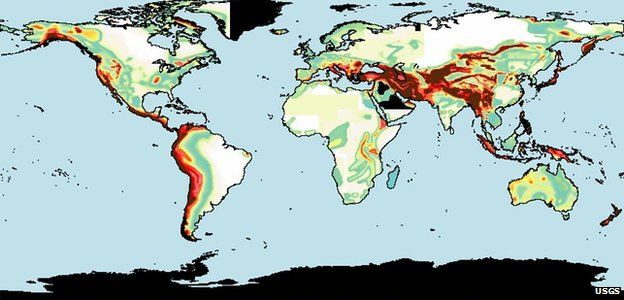 This US Geological Survey map shows where seismic hazards are greatest (red)
This US Geological Survey map shows where seismic hazards are greatest (red)
Other countries in continental collision zones are underlain by a nightmare of widely dispersed faults, splintering across thousands of kilometres of land.
All the way from the Mediterranean to Indonesia, lies a restless network of earthquake faults, created by the African, Arabian and Indian plates forging northwards into the Eurasian plate. Massive cities - including Istanbul, Tehran, Tabriz and Ashkhabad - are situated on some of the most dangerous land on Earth.
"Because continental faults are less confined, they rupture less frequently, with some faults only coming to life every few thousand years - well beyond human memory or recorded history," explains James Jackson, a geologist at Cambridge University, UK, who heads up Earthquakes Without Frontiers, a project to increase resilience to continental earthquakes.
Since 1900, earthquakes on continental faults have killed twice as many people as earthquakes on ocean-continent boundaries. The Army hospital in Kathmandu posts pictures of survivors on a notice board
The Army hospital in Kathmandu posts pictures of survivors on a notice board
Over the last few years, Jackson and his colleagues have been tracking down these elusive continental faults in Iran, Kazakhstan and China.
Using high-resolution satellite images, they can spot anomalies in the landscape that hint at where the fault may lie.
Meanwhile, seismic reflections help to draw a picture of what lies underground. And back in the lab, the scientists study regular satellite snapshots of the Earth's surface to monitor how the planet's surface is deforming.
"We can see exactly where the Earth is being stretched apart or sheared, enabling us to map which parts of the Earth are under greatest strain," says Richard Walters from Leeds University, a member of the Earthquakes Without Frontiers team.
Inverted expenditure
In Nepal's case, much of this information was already available, and indeed a great deal of work had been done by local organisations (such as the National Society for Earthquake Technology) to prepare for the next big earthquake - training stonemasons, retrofitting schools and hospitals, educating people about earthquakes and stockpiling vital resources.
"It does appear that there has been much less loss of life than would have been expected from such a large earthquake (though the toll could still turn out to be in the tens of thousands) and there is evidence that the programmes of the Nepalese government and some of the non-profit agencies did save lives," says Philip England, a geologist at Oxford University, also part of the Earthquakes without Frontiers team.
If nothing else the devastating earthquake in Nepal will hopefully highlight to the international community how vital it is to build earthquake resilience.
"Five times more money is spent on a response [to an earthquake] than it is on helping people to prepare," Katie Peters, from the Overseas Development Institute in London, told Sky News earlier this week.
The first results from the EU's Sentinal 1 satellite show that last Saturday's earthquake in Nepal did not rupture the surface, suggesting that significant strain may still be stored on that segment of the fault, and that another large earthquake could hit in the coming decades.
"Appalling though this event is, it could have been far, far worse. Let's hope that this event is the trigger for a more positive outcome next time," says England.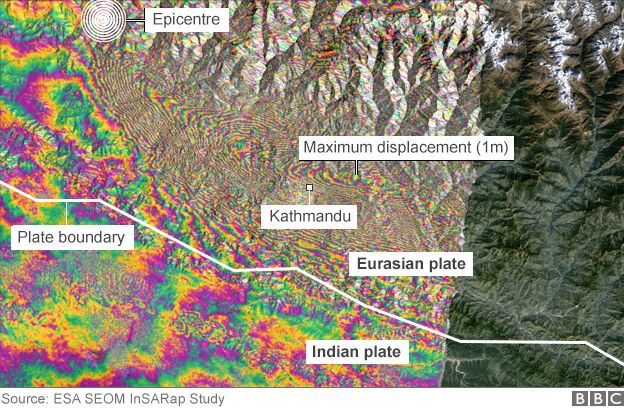
Wildlife decline may lead to 'empty landscape'
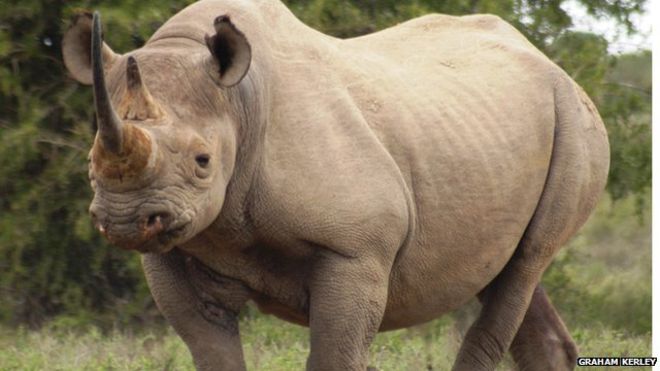
Populations of some of the world's largest wild animals are dwindling, raising the threat of an "empty landscape", say scientists.
About 60% of giant herbivores - plant-eaters - including rhinos, elephants and gorillas, are at risk of extinction, according to research.
Analysis of 74 herbivore species, published in Science Advances, blamed poaching and habitat loss.
A previous study of large carnivores showed similar declines.
Prof William Ripple, of Oregon State University, led the research looking at herbivores weighing over 100kg, from the reindeer up to the African elephant.
"This is the first time anyone has analysed all of these species as a whole," he said.
"The process of declining animals is causing an empty landscape in the forest, savannah, grasslands and desert."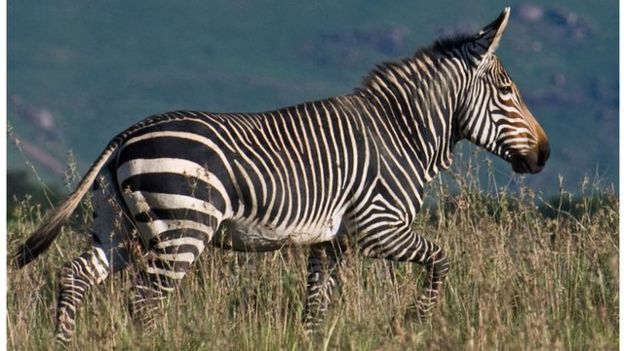 The threatened mountain zebra
The threatened mountain zebra
Prof David Macdonald, of Oxford University's Wildlife Conservation Research Unit, was among the team of 15 international scientists.
"The big carnivores, like the charismatic big cats or wolves, face horrendous problems from direct persecution, over-hunting and habitat loss, but our new study adds another nail to their coffin - the empty larder," he said.
"It's no use having habitat if there's nothing left to eat in it."
According to the research, the decline is being driven by a number of factors including habitat loss, hunting for meat or body parts, and competition for food and resources with livestock.
With rhinoceros horn worth more than gold, diamonds or cocaine on illegal markets, rhinos could be extinct in the wild within 20 years in Africa, said the researchers.
The consequences of large wild herbivore decline include:
Loss of habitat: for example, elephants maintain forest clearings by trampling vegetation
Effects on the food chain: large predators such as lions, leopards, and hyena rely on large herbivores for food
Seed dispersal: large herbivores eat seeds which are carried over long distances
Impact on humans: an estimated one billion people rely on wild meat for subsistence while the loss of iconic herbivores will have a negative impact on tourism
The biggest losses are in South East Asia, India and Africa.
Europe and North America have already lost most of their large herbivores in a previous wave of extinctions.
Tesla Ventures Into Solar Power Storage for Home and Business

On CNBC, Phil LeBeau reports on Elon Musk’s introduction of battery systems for home and business use. By CNBC onPublish DateMay 1, 2015.
In recent years, the fast-growing popularity of solar panels has intensified a central challenge: how to use the sun’s energy when it isn’t shining.
Now, Tesla Motors, the maker of luxury electric sedans, says it is taking a big step toward meeting that challenge with a fleet of battery systems aimed at homeowners, businesses and utilities. The company’s foray into the solar storage market will include rechargeable lithium-ion battery packs that can mount to a home garage wall as well as battery blocks large enough to smooth out fluctuations in the grid.
“We’ve obviously been working on building a world-class battery, a superefficient and affordable way to store energy,” said Khobi Brooklyn, a Tesla spokeswoman. “It’s just that we’ve been putting that battery in cars most of the time.”
To herald its ambitions in the field, the company scheduled an event Thursday night at its design studio in Hawthorne, Calif., with Elon Musk, its chief executive, presiding.
In a news conference before the event, Mr. Musk said the consumer battery, called the Powerwall, would sell for $3,500, and was derived from the batteries that Tesla uses in its Model S vehicles. The device, which Tesla will start producing later this year, will be installed by licensed technicians.

In Hawaii, where 12 percent of the homes have solar panels, handling the surplus power is putting pressure on the state’s biggest utility, which is fighting to reduce what it pays for the energy. By Erik Braund and Eugene Yi on Publish DateApril 18, 2015. Photo by Kent Nishimura for The New York Times.
The batteries will be connected to the Internet and can be managed by Tesla from afar. Customers can connect up to nine battery packs to store larger amounts of power.
“If you have the Tesla Powerwall, if the utility goes down, you still have power,” Mr. Musk said. He added: “The whole thing is an integrated system that just works.”
Energy and auto analysts have generally responded positively to Tesla’s move. “Elon thinks that there’s a long-term gain to be made or a long-term play not only in electric cars but also in electric energy storage — and he’s probably right,” said Karl Brauer, an analyst at Kelley Blue Book. “There’s a universal application for portable energy and storable energy that goes to everybody. It’s really just a matter of getting the business model together.”
Tesla’s announcement comes as energy companies are moving in the same direction. Sungevity, a leading solar installer, announced a partnership this week with Sonnenbatterie, a smart energy storage provider in Europe, to begin offering their systems to its customers. NRG, one of the largest independent power producers in the United States, is also developing storage products.
“We have to be in this space,” said Steve McBee, chief executive of NRG Home. “If your goal is to build a meaningful solar business that is durable over time, you have to assume that that solar business is going to morph into a solar-plus-storage solution. That will be mandatory at some point.”
Still, the market is young and, some experts say, Tesla has the advantage of reach and scale — as well as a $5 billion battery production plant under construction near Reno, Nev., that it calls the

The Gigafactory, a $5 billion plant being built near Reno, Nev., by Tesla, the maker of electric vehicles, will produce lithium-ion battery systems designed to be used by utilities and homeowners. CreditJames Glover/Reuters
“Tesla’s not the only one doing it, but Tesla can bring it to a wider audience than most other people can,” said Shayle Kann, a vice president at GTM Research, which tracks clean-tech industries. “Once they get the Gigafactory up and going, they will be able to deploy on a scale that no one will quite be able to rival. So they may have a cost advantage in that.”
Tesla has been refining its storage business for a few years, working with a number of companies including Jackson Family Wines, the electric utility Southern California Edison and the installation company SolarCity, of which Mr. Musk is chairman and whose founders, Lyndon and Peter Rive, are his cousins.
The Tesla systems are designed for different scales. The home battery, roughly four feet by three feet, would allow solar customers to have power in the event of an failure, draw from it when utility rates are higher and use more of the electricity their panels produce, easing reliance on the grid.
For utilities, they can help compensate for fluctuations from intermittent sources like solar and wind — whose production can dip sharply or stop altogether — as well as meet demand during peak periods.
And for businesses, they can help lower demand for electricity from the grid, which in turn can lower costly demand charges.
Amazon Web Services, which manages cloud-based computing systems and has a goal to derive all its energy from renewable sources, is beginning a pilot program with Tesla in Northern California.
“Batteries are important for both data center reliability and as enablers for the efficient application of renewable power,” James Hamilton, distinguished engineer at Amazon Web Services, said through a spokeswoman. “They help bridge the gap between intermittent production, from sources like wind, and the data center’s constant power demands.”
The distinctive song of a secretive and elusive bird in central China has helped researchers to identify it and deem it to be a new species to science.
Scientists first heard the harsh call of the Sichuan bush warbler in 1987, but they only recently gathered enough data to formally describe it.
The new species, Locustella chengi, has been named after Prof Cheng Tso-hsin, a distinguished Chinese ornithologist.
The details have been published in the Avian Research journal.
"These birds are almost impossible to see when they are not singing," explained one of the scientists to describe the new species, Per Alstrom from the Swedish Species Information Centre, based at the Swedish University of Agricultural Sciences.
"If the species had not been singing when we first heard it back in 1987, we would never have seen it.
"They are incredibly difficult to see because they are so secretive, sneaking around in the dense vegetation, close to or on the ground. But when they are singing, you can hear them from quite a long distance.
He told BBC News: "By being patient or using tapes to attract them, you can see them - although they will stay in the dense habitat."
Harsh tones
The song of the new species is harsher than that of its closest relative, the russet bush warbler, and consists of a "drawn-out note followed by a shorter note that are repeated in series".
The team of researchers, from Sweden, China, Vietnam, the UK and US, carried out DNA analysis that showed the two birds were very closely related and were probably separated from a common ancestor about 850,000 years ago.
Prof Alstrom explained that the publication of the paper formally describing the Sichuan bush warbler came after a search lasting almost 30 years.
"I have been trying to find this bird ever since we first heard it back in 1987," he said. We suspected that it was something different, something new (to science).
"Last year, we had received information from colleagues that both these birds - the unknown species and the Russet Bush warbler - were present on the same mountain.
"We had not found both of them together previously, so we went there specifically to get more information on how they interacted together; whether they occurred in different habitats, etc, to see if they were actually ecologically and reproductively isolated in these areas."
Although the two species have slight differences in proportions, it is the the birds' songs that mark a clear distinction.
Prof Alstrom suggested that was probably the result of random processes that had resulted in the two species evolving different vocalisation patterns.
"It is probably a combination of chance factors, such as individuals undergoing vocal "mutation', and also sexual selection," he suggested.
"Songs are used to attract females and to deter other males from their territory, so there is probably a factor of strong sexual selection evolution involved in these differences."
 Great efforts had been made in Nepal to improve resilience. Even so...
Great efforts had been made in Nepal to improve resilience. Even so...On 1 April, 2014, a Magnitude 8.2 earthquake rocked northern Chile. Six people died, 2,500 homes were damaged and 80,000 people were displaced. Just over one year later, a M7.8 earthquake strikes Nepal. Over 6,200 people (and counting) have been killed, entire towns and villages flattened and millions of people left homeless.
Chile's earthquake barely made the news, whilst Nepal's has brought complete and utter devastation. How did two such similar earthquakes have such disparate effects?
A huge part of the answer is, of course, building standards and wealth.
Since Chile's terrible M9.5 earthquake in 1960, where over 5,500 people died, the country has taken big steps in modernising its buildings, designing them to withstand the shaking produced by great earthquakes.
Meanwhile, in Nepal, few buildings were up to code, and many toppled when the earthquake struck.
But wealth and building codes don't tell the entire story: the geology is different, too.
Nepal sits on a continental collision zone (India is smashing into Asia) and its earthquake fault is well disguised: most of the fault is buried deep underground and surface ruptures are quickly covered by muds washed down by monsoon rains and the dense jungle.
Furthermore, the speed of this continental collision (around 4.5cm every year) means that major quakes only hit Nepal every few decades. Chile's fault meanwhile is obvious - a whopping great trench where the Pacific Ocean floor dives underneath South America at a rate of nearly 10cm per year - with major earthquakes occurring every year, making earthquake-resilience a priority.
As continental collision zones go, Nepal's is at the simpler end of the spectrum and has been relatively well studied.
Indeed, geologists had identified Nepal's most vulnerable segment of faultjust weeks before the recent deadly quake struck.
 This US Geological Survey map shows where seismic hazards are greatest (red)
This US Geological Survey map shows where seismic hazards are greatest (red)Other countries in continental collision zones are underlain by a nightmare of widely dispersed faults, splintering across thousands of kilometres of land.
All the way from the Mediterranean to Indonesia, lies a restless network of earthquake faults, created by the African, Arabian and Indian plates forging northwards into the Eurasian plate. Massive cities - including Istanbul, Tehran, Tabriz and Ashkhabad - are situated on some of the most dangerous land on Earth.
"Because continental faults are less confined, they rupture less frequently, with some faults only coming to life every few thousand years - well beyond human memory or recorded history," explains James Jackson, a geologist at Cambridge University, UK, who heads up Earthquakes Without Frontiers, a project to increase resilience to continental earthquakes.
Since 1900, earthquakes on continental faults have killed twice as many people as earthquakes on ocean-continent boundaries.
 The Army hospital in Kathmandu posts pictures of survivors on a notice board
The Army hospital in Kathmandu posts pictures of survivors on a notice boardOver the last few years, Jackson and his colleagues have been tracking down these elusive continental faults in Iran, Kazakhstan and China.
Using high-resolution satellite images, they can spot anomalies in the landscape that hint at where the fault may lie.
Meanwhile, seismic reflections help to draw a picture of what lies underground. And back in the lab, the scientists study regular satellite snapshots of the Earth's surface to monitor how the planet's surface is deforming.
"We can see exactly where the Earth is being stretched apart or sheared, enabling us to map which parts of the Earth are under greatest strain," says Richard Walters from Leeds University, a member of the Earthquakes Without Frontiers team.
Inverted expenditure
In Nepal's case, much of this information was already available, and indeed a great deal of work had been done by local organisations (such as the National Society for Earthquake Technology) to prepare for the next big earthquake - training stonemasons, retrofitting schools and hospitals, educating people about earthquakes and stockpiling vital resources.
"It does appear that there has been much less loss of life than would have been expected from such a large earthquake (though the toll could still turn out to be in the tens of thousands) and there is evidence that the programmes of the Nepalese government and some of the non-profit agencies did save lives," says Philip England, a geologist at Oxford University, also part of the Earthquakes without Frontiers team.
If nothing else the devastating earthquake in Nepal will hopefully highlight to the international community how vital it is to build earthquake resilience.
"Five times more money is spent on a response [to an earthquake] than it is on helping people to prepare," Katie Peters, from the Overseas Development Institute in London, told Sky News earlier this week.
The first results from the EU's Sentinal 1 satellite show that last Saturday's earthquake in Nepal did not rupture the surface, suggesting that significant strain may still be stored on that segment of the fault, and that another large earthquake could hit in the coming decades.
"Appalling though this event is, it could have been far, far worse. Let's hope that this event is the trigger for a more positive outcome next time," says England.

Wildlife decline may lead to 'empty landscape'

Populations of some of the world's largest wild animals are dwindling, raising the threat of an "empty landscape", say scientists.
About 60% of giant herbivores - plant-eaters - including rhinos, elephants and gorillas, are at risk of extinction, according to research.
Analysis of 74 herbivore species, published in Science Advances, blamed poaching and habitat loss.
A previous study of large carnivores showed similar declines.
Prof William Ripple, of Oregon State University, led the research looking at herbivores weighing over 100kg, from the reindeer up to the African elephant.
"This is the first time anyone has analysed all of these species as a whole," he said.
"The process of declining animals is causing an empty landscape in the forest, savannah, grasslands and desert."
 The threatened mountain zebra
The threatened mountain zebraProf David Macdonald, of Oxford University's Wildlife Conservation Research Unit, was among the team of 15 international scientists.
"The big carnivores, like the charismatic big cats or wolves, face horrendous problems from direct persecution, over-hunting and habitat loss, but our new study adds another nail to their coffin - the empty larder," he said.
"It's no use having habitat if there's nothing left to eat in it."
According to the research, the decline is being driven by a number of factors including habitat loss, hunting for meat or body parts, and competition for food and resources with livestock.
With rhinoceros horn worth more than gold, diamonds or cocaine on illegal markets, rhinos could be extinct in the wild within 20 years in Africa, said the researchers.
The consequences of large wild herbivore decline include:
Loss of habitat: for example, elephants maintain forest clearings by trampling vegetation
Effects on the food chain: large predators such as lions, leopards, and hyena rely on large herbivores for food
Seed dispersal: large herbivores eat seeds which are carried over long distances
Impact on humans: an estimated one billion people rely on wild meat for subsistence while the loss of iconic herbivores will have a negative impact on tourism
The biggest losses are in South East Asia, India and Africa.
Europe and North America have already lost most of their large herbivores in a previous wave of extinctions.
Tesla Ventures Into Solar Power Storage for Home and Business

On CNBC, Phil LeBeau reports on Elon Musk’s introduction of battery systems for home and business use. By CNBC onPublish DateMay 1, 2015.
In recent years, the fast-growing popularity of solar panels has intensified a central challenge: how to use the sun’s energy when it isn’t shining.
Now, Tesla Motors, the maker of luxury electric sedans, says it is taking a big step toward meeting that challenge with a fleet of battery systems aimed at homeowners, businesses and utilities. The company’s foray into the solar storage market will include rechargeable lithium-ion battery packs that can mount to a home garage wall as well as battery blocks large enough to smooth out fluctuations in the grid.
“We’ve obviously been working on building a world-class battery, a superefficient and affordable way to store energy,” said Khobi Brooklyn, a Tesla spokeswoman. “It’s just that we’ve been putting that battery in cars most of the time.”
To herald its ambitions in the field, the company scheduled an event Thursday night at its design studio in Hawthorne, Calif., with Elon Musk, its chief executive, presiding.
In a news conference before the event, Mr. Musk said the consumer battery, called the Powerwall, would sell for $3,500, and was derived from the batteries that Tesla uses in its Model S vehicles. The device, which Tesla will start producing later this year, will be installed by licensed technicians.

In Hawaii, where 12 percent of the homes have solar panels, handling the surplus power is putting pressure on the state’s biggest utility, which is fighting to reduce what it pays for the energy. By Erik Braund and Eugene Yi on Publish DateApril 18, 2015. Photo by Kent Nishimura for The New York Times.
The batteries will be connected to the Internet and can be managed by Tesla from afar. Customers can connect up to nine battery packs to store larger amounts of power.
“If you have the Tesla Powerwall, if the utility goes down, you still have power,” Mr. Musk said. He added: “The whole thing is an integrated system that just works.”
Energy and auto analysts have generally responded positively to Tesla’s move. “Elon thinks that there’s a long-term gain to be made or a long-term play not only in electric cars but also in electric energy storage — and he’s probably right,” said Karl Brauer, an analyst at Kelley Blue Book. “There’s a universal application for portable energy and storable energy that goes to everybody. It’s really just a matter of getting the business model together.”
Tesla’s announcement comes as energy companies are moving in the same direction. Sungevity, a leading solar installer, announced a partnership this week with Sonnenbatterie, a smart energy storage provider in Europe, to begin offering their systems to its customers. NRG, one of the largest independent power producers in the United States, is also developing storage products.
“We have to be in this space,” said Steve McBee, chief executive of NRG Home. “If your goal is to build a meaningful solar business that is durable over time, you have to assume that that solar business is going to morph into a solar-plus-storage solution. That will be mandatory at some point.”
Still, the market is young and, some experts say, Tesla has the advantage of reach and scale — as well as a $5 billion battery production plant under construction near Reno, Nev., that it calls the

The Gigafactory, a $5 billion plant being built near Reno, Nev., by Tesla, the maker of electric vehicles, will produce lithium-ion battery systems designed to be used by utilities and homeowners. CreditJames Glover/Reuters
“Tesla’s not the only one doing it, but Tesla can bring it to a wider audience than most other people can,” said Shayle Kann, a vice president at GTM Research, which tracks clean-tech industries. “Once they get the Gigafactory up and going, they will be able to deploy on a scale that no one will quite be able to rival. So they may have a cost advantage in that.”
Tesla has been refining its storage business for a few years, working with a number of companies including Jackson Family Wines, the electric utility Southern California Edison and the installation company SolarCity, of which Mr. Musk is chairman and whose founders, Lyndon and Peter Rive, are his cousins.
The Tesla systems are designed for different scales. The home battery, roughly four feet by three feet, would allow solar customers to have power in the event of an failure, draw from it when utility rates are higher and use more of the electricity their panels produce, easing reliance on the grid.
For utilities, they can help compensate for fluctuations from intermittent sources like solar and wind — whose production can dip sharply or stop altogether — as well as meet demand during peak periods.
And for businesses, they can help lower demand for electricity from the grid, which in turn can lower costly demand charges.
Amazon Web Services, which manages cloud-based computing systems and has a goal to derive all its energy from renewable sources, is beginning a pilot program with Tesla in Northern California.
“Batteries are important for both data center reliability and as enablers for the efficient application of renewable power,” James Hamilton, distinguished engineer at Amazon Web Services, said through a spokeswoman. “They help bridge the gap between intermittent production, from sources like wind, and the data center’s constant power demands.”


0 comments:
Post a Comment